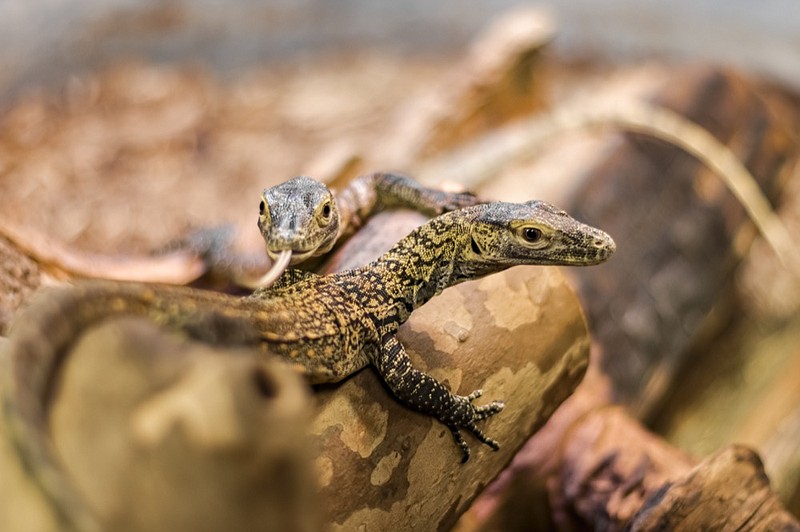In a rare and miraculous occurrence, a female Komodo dragon has produced three offspring without a male's assistance, according to a news release from the Chattanooga Zoo.
The three hatchlings were born on August 4, 2019, and DNA testing ensued in order to determine if Charlie, a first-time mother, had reproduced with the help of resident male Kadal, or on her own - a phenomenon known as parthenogenesis.
The DNA results showed the babies were the result of parthenogenesis, which is a type of reproduction where the female produces offspring without male fertilization. It's something Komodo dragons have evolved to do as they typically live isolated in the wild and often become violent when approached, the release states.
Female Komodo dragons carry WZ sex chromosomes, while males carry the ZZ type. When parthenogenesis happens, the mother can only create WW or ZZ eggs. Since eggs with the sex chromosomes of WW aren't viable, only ZZ eggs are left to produce all male hatchlings. Parthenogenesis is considered very rare, with the first case of a successful parthenogenesis reproduction in Komodo dragons recorded in 2006, according to the release.
"Although Kadal and Charlie were placed together in hopes of breeding, the Chattanooga Zoo staff is very excited to witness this monumental work of nature and be part of such an important conservation program," the release states.
The six-month-old brothers, named Onyx, Jasper, and Flint, are growing rapidly and doing well.
"Our staff is thrilled to play a part and to be able to witness this truly miraculous occurrence. As the Komodo dragon is listed as vulnerable to extinction, these hatchlings are even more special and represent a bright future for their species," said Dardenelle Long, Chattanooga Zoo CEO and President, in the release.
Visitors to the Chattanooga Zoo can see the hatchlings this weekend in the Forests of the World habitat building on both Saturday and Sunday from 9 a.m. until 5 p.m.

